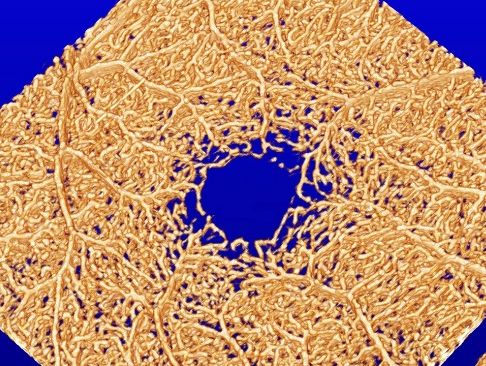Peter Maloca, group leader at IOB for Ophthalmic Imaging, together with Konstantin Gugleta, senior attending physician at the University Hospital Eye Clinic Basel and Henner Hanssen, Head of Preventive Sports Medicine & Systems Physiology, Department of Sport, Exercise and Health, University of Basel, investigated whether an easy-to-use method of measuring retinal vessel diameters can indicate cardiovascular risk.
A noninvasive assessment of the retinal microstructure - intuitive to use digital retinal vessel wall analysis (VWA) - seems to be more timely and patient-friendly as clinical application to achieve high image quality and valid results compared to demanding complex high-resolution technology such as adaptive optics imaging, the study now published in TVST suggests.
Retinal vessel diameters are valid biomarkers of cerebrovascular and cardiovascular risk. Narrower arteriolar and wider venular diameters have previously been associated with increased cardiovascular events such as stroke, coronary heart disease, and overall higher cardiovascular mortality. Further systemic cardiovascular risk factors such as hypertension, diabetes, obesity, dyslipidemia, or inflammation have also been associated with retinal vessel alterations. However, attempts to assess retinal wall-to-lumen ratio so far were based on complex technology and procedures that adversely affect practicability for daily clinical routine.
Additional measurement of wall-to-lumen ratio by use of digital VWA may prove to be a valuable extension of the currently used analysis of retinal vessel diameters as biomarkers of cardiovascular risk, and may improve accuracy of cardiovascular risk stratification. The method is more patient friendly and intuitive to use.
Original publication
New Frontiers in Noninvasive Analysis of Retinal Wall-to-Lumen Ratio by Retinal VesselWall Analysis
Lukas Streese, Lukas Y. Brawand, Konstantin Gugleta, Peter M. Maloca,
Walthard Vilser and Henner Hanssen
Trans Vis Sci Tech. 2020;9(6):7
https://doi.org/10.1167/tvst.9.6.7

